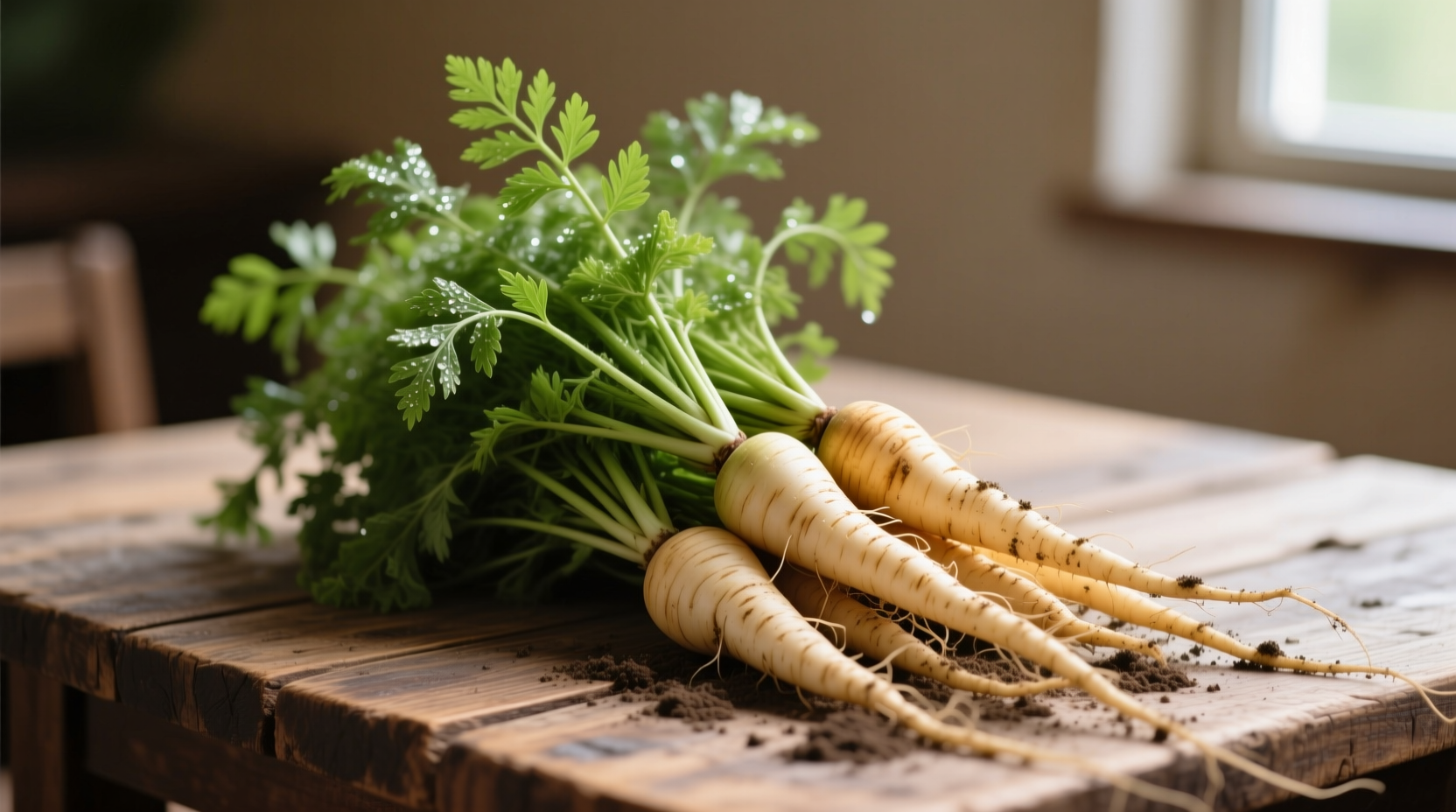Ever wondered what parsnips taste like before adding them to your next roast or soup? This often-overlooked root vegetable delivers a distinctive flavor experience that surprises many first-time tasters. Understanding parsnip's unique taste profile helps you make informed cooking decisions and unlock its full culinary potential.
The Complete Flavor Profile of Parsnips
When you bite into a raw parsnip, you'll immediately notice its crisp texture and complex flavor layers. Unlike their orange cousins (carrots), parsnips offer a more sophisticated taste experience with multiple dimensions:
- Natural sweetness from high concentrations of glucose and sucrose
- Earthy undertones reminiscent of fresh soil after rain
- Nutty notes similar to fresh hazelnuts
- Subtle bitterness (less pronounced than celery)
- Clean finish without lingering aftertaste
According to research from the University of Illinois Extension, parsnips contain approximately 4.5-5.5% natural sugars by weight—higher than most root vegetables except beets. This explains their remarkable sweetness, particularly when harvested after the first frost when cold temperatures trigger starch-to-sugar conversion.
How Cooking Transforms Parsnip Flavor
The way you prepare parsnips dramatically affects their taste profile. Understanding these transformations helps you achieve your desired flavor outcome:
| Cooking Method | Flavor Transformation | Best For |
|---|---|---|
| Roasting (400°F/200°C) | Deep caramelization enhances natural sweetness; develops nutty, almost maple-like notes | Main dishes, side dishes, vegetarian mains |
| Boiling/Mashing | Mellows bitterness; creates smooth, sweet puree similar to sweet potatoes | Baby food, soups, creamy side dishes |
| Raw (shaved or grated) | Crisp texture with pronounced earthiness and subtle peppery notes | Salads, slaws, crudites |
| Frying | Creates crispy exterior with concentrated sweetness inside | Fritters, chips, tempura |
Professional chefs particularly value parsnips' ability to develop complex Maillard reaction compounds when roasted. As Sophie Dubois explains, “The magic happens around 30 minutes of roasting—that's when the natural sugars caramelize just enough to create those beautiful nutty, almost coffee-like undertones without burning.”

Parsnips vs. Similar Vegetables: Flavor Comparison
Understanding how parsnips compare to familiar vegetables helps you make informed substitutions and flavor pairings:
- Carrots: While both are sweet, carrots have brighter, more straightforward sweetness with citrus notes. Parsnips offer deeper earthiness and more complex nutty flavors. Carrots contain beta-carotene (giving them orange color), while parsnips have different phytonutrients.
- Celery root: Both have earthy notes, but celery root delivers much stronger celery flavor with pronounced bitterness. Parsnips are significantly sweeter with less vegetal intensity.
- White carrots: Often confused with parsnips, white carrots lack the distinctive nuttiness and have milder sweetness. They're essentially flavorless compared to parsnips' complex profile.
The USDA Agricultural Research Service notes that parsnips contain unique compounds like falcarinol that contribute to their distinctive flavor profile—compounds not found in significant quantities in other common root vegetables.
Seasonal Flavor Changes: Why Winter Parsnips Taste Better
One of parsnips' most fascinating characteristics is how their flavor evolves with seasonal changes. Unlike most vegetables that decline in quality after frost, parsnips actually improve:
When temperatures drop below 40°F (4°C), parsnips undergo a remarkable biochemical transformation. The plant converts stored starches into sugars as a natural antifreeze mechanism—a process called cold-induced sweetening. This explains why:
- Spring-harvested parsnips taste more vegetal with noticeable bitterness
- Fall/winter parsnips (after 1-2 frosts) develop pronounced sweetness
- Extended cold storage continues the sweetening process for several weeks
According to Cornell University's vegetable research program, parsnips harvested after three consecutive frosts can contain up to 30% more natural sugars than those harvested before the first frost. This seasonal variation significantly impacts how parsnips taste in your cooking.
Practical Cooking Applications
Now that you know what parsnips taste like, here's how to leverage their unique flavor in your kitchen:
Perfect Flavor Pairings
- Herbs: Thyme, rosemary, and sage complement parsnips' earthiness
- Spices: Cumin, coriander, and smoked paprika enhance their nuttiness
- Fats: Brown butter, olive oil, and bacon fat amplify their natural sweetness
- Acids: A splash of apple cider vinegar or lemon juice balances their sweetness
When to Choose Parsnips Over Alternatives
Use parsnips when you want:
- More complex sweetness than carrots provide
- Less bitterness than celery root
- A neutral base for soups that won't overpower other ingredients
- A fall/winter vegetable with distinctive seasonal character
Avoid substituting parsnips when recipes specifically require:
- Bright, citrusy sweetness (use carrots instead)
- Strong celery flavor (use actual celery)
- Starchy texture (use potatoes)
Common Mistakes to Avoid
- Peeling too aggressively: The most flavorful compounds concentrate just beneath the skin—a light scrub often suffices
- Undercooking: Raw parsnips can be unpleasantly fibrous—they need proper cooking to soften
- Over-roasting: Their high sugar content means they burn more easily than carrots
- Ignoring the greens: Parsnip tops make excellent pesto if harvested young
Why Understanding Parsnip Flavor Matters
Knowing what parsnips taste like transforms how you approach cooking with this versatile vegetable. Their unique flavor profile—sweet yet earthy, nutty yet clean—makes them invaluable for creating sophisticated dishes without artificial sweeteners or complex techniques.
Whether you're looking to expand your vegetable repertoire, reduce sugar in recipes naturally, or simply understand that mysterious root vegetable at the farmers market, recognizing parsnips' distinctive taste characteristics empowers you to make better culinary decisions. The next time you see parsnips, you'll know exactly what flavor experience to expect and how to maximize their potential in your cooking.











 浙公网安备
33010002000092号
浙公网安备
33010002000092号 浙B2-20120091-4
浙B2-20120091-4